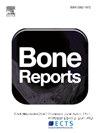The prevention of osteoporotic vertebral fractures in eastern and in western countries
IF 2.6
Q3 ENDOCRINOLOGY & METABOLISM
引用次数: 0
Abstract
Osteoporotic vertebral fractures (VFs) are among the most common and clinically significant manifestations of skeletal fragility, contributing substantially to morbidity, disability, and future fracture risk worldwide. Yet, their recognition and management remain inconsistent across regions. To explore differences and similarities in the prevalence, diagnosis, management, and prevention of vertebral fractures, the East Meets West (EmW) Action Group of the European Calcified Tissue Society convened a multi-country exchange among clinical and research experts from Europe, the USA, and East Asia. This report summarizes the discussions and synthesizes current knowledge on the topic. Evidence from China, South Korea, Japan, and Germany shows a wide range in reported VF prevalence and incidence, largely influenced by differences in population aging, imaging access, and diagnostic adjudication methods. While lateral spine radiographs remain the standard for detection in both research and clinical care, variable use of quantitative morphometry (QM), semi-quantitative (SQ), and algorithm-based qualitative (ABQ) methods limits comparability. MRI remains the gold standard for assessing fracture acuity, but is not feasible for widespread screening. VFA via DXA is gaining popularity, although underutilized in several settings. Despite the availability of effective pharmacologic treatments, including bisphosphonates, denosumab, and anabolic agents, treatment rates following VF remain suboptimal across all countries studied. None of the countries currently has a nationwide vertebral fracture screening program, although fracture liaison services (FLS) and AI-assisted imaging offer promising pathways forward. The lack of a universally accepted definition and gold standard for VF adjudication continues to hamper clinical decision-making and data harmonization. This report highlights the need for greater international consensus on diagnostic criteria, improved integration of vertebral fracture screening into clinical workflows, and the development of targeted strategies to close treatment gaps and reduce the global burden of vertebral fractures.
东西方国家骨质疏松性椎体骨折的预防
骨质疏松性椎体骨折(VFs)是骨骼脆弱最常见和最重要的临床表现之一,在世界范围内对发病率、残疾和未来骨折风险有很大贡献。然而,各地区对它们的认识和管理仍然不一致。为了探讨椎体骨折的患病率、诊断、管理和预防方面的异同,欧洲钙化组织学会的东西方相遇(EmW)行动小组召集了来自欧洲、美国和东亚的临床和研究专家进行多国交流。本报告总结了关于该主题的讨论并综合了当前的知识。来自中国、韩国、日本和德国的证据表明,报告的VF患病率和发病率差异很大,这在很大程度上受到人口老龄化、影像学获取和诊断判定方法差异的影响。虽然侧位脊柱x线片仍然是研究和临床护理中检测的标准,但定量形态测定(QM)、半定量(SQ)和基于算法的定性(ABQ)方法的可变使用限制了可比性。MRI仍然是评估骨折敏锐度的金标准,但并不适用于广泛的筛查。通过DXA的VFA越来越受欢迎,尽管在一些设置中未得到充分利用。尽管有有效的药物治疗,包括双膦酸盐、地诺单抗和合成代谢药物,但在所研究的所有国家中,VF后的治愈率仍然不是最佳的。尽管骨折联络服务(FLS)和人工智能辅助成像提供了有希望的发展途径,但目前没有一个国家有全国性的椎体骨折筛查计划。缺乏一个普遍接受的定义和VF裁决的黄金标准继续阻碍临床决策和数据协调。该报告强调需要在诊断标准方面达成更大的国际共识,将椎体骨折筛查更好地整合到临床工作流程中,并制定有针对性的策略,以缩小治疗差距并减轻椎体骨折的全球负担。
本文章由计算机程序翻译,如有差异,请以英文原文为准。
求助全文
约1分钟内获得全文
求助全文
来源期刊

Bone Reports
Medicine-Orthopedics and Sports Medicine
CiteScore
4.30
自引率
4.00%
发文量
444
审稿时长
57 days
期刊介绍:
Bone Reports is an interdisciplinary forum for the rapid publication of Original Research Articles and Case Reports across basic, translational and clinical aspects of bone and mineral metabolism. The journal publishes papers that are scientifically sound, with the peer review process focused principally on verifying sound methodologies, and correct data analysis and interpretation. We welcome studies either replicating or failing to replicate a previous study, and null findings. We fulfil a critical and current need to enhance research by publishing reproducibility studies and null findings.
 求助内容:
求助内容: 应助结果提醒方式:
应助结果提醒方式:


